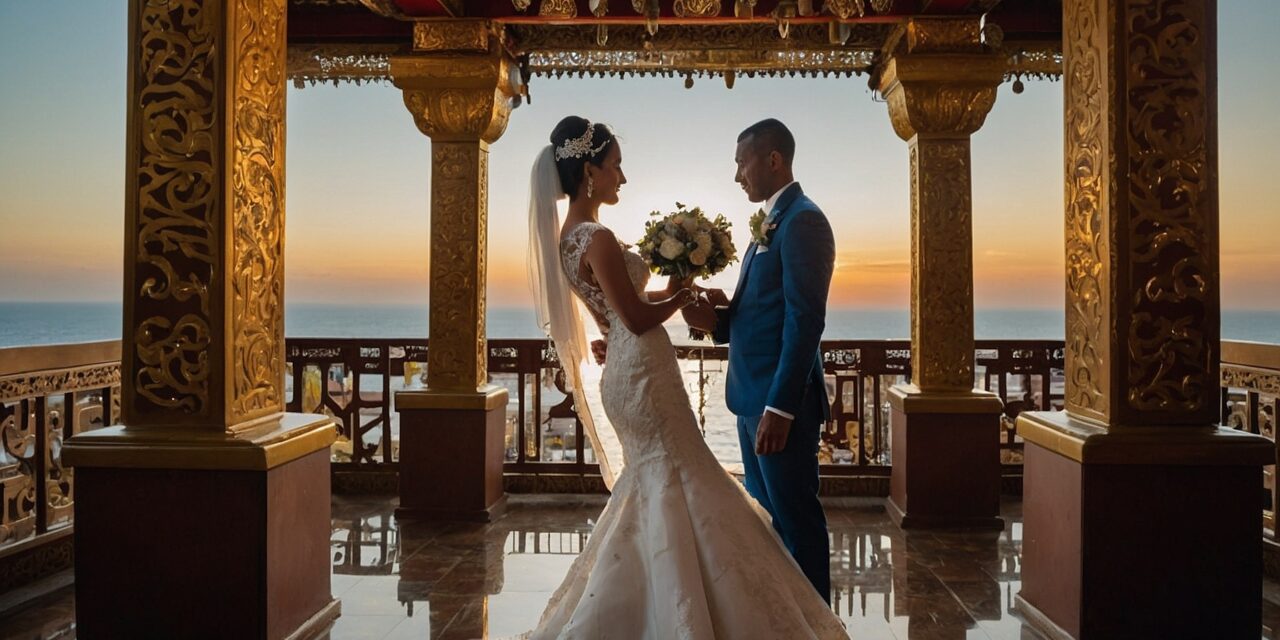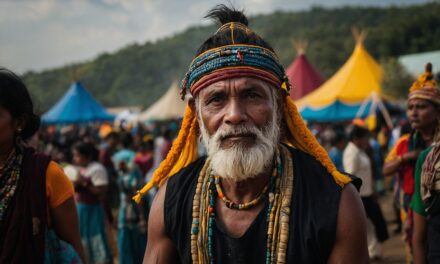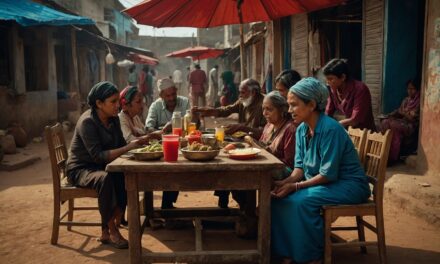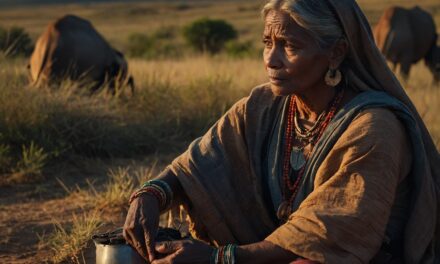Weddings are a universal celebration of love and commitment that hold great significance in cultures around the world. Regardless of where they take place, weddings are a joyous occasion that bring together family and friends to witness the union of two individuals. They symbolize the beginning of a new chapter in life and serve as a testament to the power of love. However, what makes weddings truly unique and fascinating is the diverse range of cultural traditions that are incorporated into these ceremonies.
Cultural traditions play a vital role in weddings as they reflect the values, beliefs, and customs of a particular society. These traditions have been passed down through generations and serve as a way to honor the past while embracing the future. From the attire worn by the bride and groom to the rituals performed during the ceremony, every aspect of a wedding is steeped in cultural significance. By understanding and appreciating these traditions, we gain insight into the rich tapestry of human history and the diverse ways in which love is celebrated across cultures.
Key Takeaways
- Weddings are significant across cultures and have unique traditions and customs.
- Traditional European weddings involve white dresses and throwing rice.
- Asian weddings include tea ceremonies, red dresses, and matchmaking.
- African weddings celebrate community and ancestral connections.
- Modern weddings are influenced by technology and globalization, and same-sex weddings are breaking down barriers.
Traditional Wedding Customs in Europe: From White Dresses to Throwing Rice
Europe has a long history of wedding customs that have influenced ceremonies around the world. One of the most iconic traditions is the white wedding dress, which has its roots in ancient Greece and Rome. In these cultures, brides would wear white to symbolize purity and virginity. This tradition was later popularized by Queen Victoria when she wore a white gown for her wedding to Prince Albert in 1840. Since then, white wedding dresses have become a staple in Western weddings.
Another European wedding tradition that has gained popularity worldwide is the act of throwing rice at the newlyweds. This custom originated in ancient Rome, where it was believed that showering the couple with grains would bring them fertility and prosperity. Over time, rice became the grain of choice due to its abundance and symbolism of abundance. Today, throwing rice or confetti is a common practice in weddings across Europe and beyond, symbolizing well wishes for the couple’s future.
Asian Wedding Traditions: Tea Ceremonies, Red Dresses, and Matchmaking
Asian wedding traditions are steeped in symbolism and reflect the deep-rooted cultural values of the region. One such tradition is the tea ceremony, which holds great significance in Chinese weddings. During this ceremony, the bride and groom serve tea to their parents as a sign of respect and gratitude. It is a way to honor their elders and seek their blessings for a happy and prosperous marriage. The tea ceremony also serves as an opportunity for the families to come together and establish a bond.
In many Asian cultures, the bride wears a red wedding dress instead of the traditional white gown. Red is considered an auspicious color that symbolizes luck, happiness, and prosperity. The vibrant hue is believed to ward off evil spirits and bring good fortune to the couple. The red wedding dress is often adorned with intricate embroidery and gold accents, adding to its beauty and cultural significance.
Matchmaking is another important aspect of traditional Asian weddings. In many cultures, parents play a significant role in finding suitable partners for their children. This practice reflects the importance of family and community in Asian societies. Matchmakers consider factors such as social status, family background, and compatibility when arranging marriages. While arranged marriages are less common today, the influence of matchmaking can still be seen in Asian wedding customs.
African Wedding Customs: Celebrating Community and Ancestral Connections
African weddings are vibrant celebrations that emphasize community and ancestral connections. These ceremonies are not just about the union of two individuals but also about bringing together families, friends, and even entire villages. African weddings are often multi-day affairs filled with music, dance, feasting, and traditional rituals.
Community plays a central role in African weddings as it symbolizes the support and unity of the couple’s loved ones. The entire community is involved in the planning and execution of the wedding, contributing their time, resources, and talents to ensure its success. This collective effort reflects the value placed on communal harmony and the belief that a strong community is essential for a successful marriage.
Ancestral connections are also an integral part of African wedding traditions. Many ceremonies include rituals that honor and pay tribute to ancestors, seeking their blessings and guidance for the couple’s future. These rituals often involve pouring libations, reciting prayers, or performing dances that are believed to connect the living with the spirits of their ancestors. By acknowledging their roots and ancestral heritage, African weddings celebrate the continuity of life and the importance of family ties.
Latin American Wedding Traditions: Colourful Festivities and Religious Rituals
Latin American weddings are known for their vibrant colors, lively music, and rich cultural traditions. These celebrations are a fusion of indigenous customs, European influences, and religious rituals that reflect the diverse history of the region.
Religious rituals hold great significance in Latin American weddings, particularly in countries with a strong Catholic influence. The ceremony often takes place in a church and is officiated by a priest. The couple exchanges vows and rings while receiving blessings from God and the congregation. The religious aspect of the wedding symbolizes the couple’s commitment to their faith and serves as a foundation for their marriage.
In addition to religious rituals, Latin American weddings are characterized by their festive atmosphere. Bright colors such as red, yellow, and orange are commonly used in decorations, attire, and floral arrangements. These vibrant hues represent joy, passion, and celebration. Music is another essential element of Latin American weddings, with traditional instruments such as guitars, maracas, and drums creating a lively ambiance that encourages guests to dance and celebrate.
North American Wedding Customs: From Bridal Showers to Destination Weddings
North American wedding customs have evolved over time, influenced by various cultural traditions and societal changes. One popular tradition that originated in the United States is the bridal shower. This pre-wedding celebration is typically organized by the bride’s friends and family to honor her and provide her with gifts for her new life as a married woman. The bridal shower is a way to show support and love for the bride, while also helping her prepare for her upcoming marriage.
Another trend that has gained popularity in recent years is destination weddings. Couples are increasingly opting to tie the knot in exotic locations, often far away from their hometowns. Destination weddings offer a unique and memorable experience for both the couple and their guests, combining the joy of a wedding celebration with the excitement of travel. These weddings often incorporate local customs and traditions, creating a truly immersive experience for all involved.
Middle Eastern Wedding Traditions: Henna Parties, Belly Dancing, and Lavish Feasts
Middle Eastern wedding traditions are known for their opulence, hospitality, and vibrant celebrations. One popular tradition is the henna party, also known as the Mehndi ceremony. This pre-wedding event involves applying intricate henna designs to the hands and feet of the bride and female guests. The henna symbolizes good luck, fertility, and protection against evil spirits. The henna party is a joyous occasion filled with music, dance, and laughter.
Belly dancing is another integral part of Middle Eastern wedding celebrations. Professional belly dancers are often hired to entertain guests with their mesmerizing moves and graceful performances. Belly dancing is considered an art form that celebrates femininity and sensuality. It adds an element of excitement and entertainment to the wedding festivities, creating a lively atmosphere that keeps guests engaged throughout the night.
Lavish feasts are a hallmark of Middle Eastern wedding traditions. These feasts are an opportunity to showcase the region’s rich culinary heritage and hospitality. Guests are treated to a variety of delicious dishes, including traditional delicacies such as kebabs, falafel, hummus, and baklava. The abundance of food symbolizes the couple’s prosperity and their desire to share their blessings with their loved ones.
Australian Wedding Customs: Beach Weddings, Barbecues, and Outdoor Celebrations
Australia is known for its laid-back and outdoorsy lifestyle, which is reflected in its wedding customs. Beach weddings have become increasingly popular in recent years, thanks to the country’s stunning coastline and beautiful weather. Couples exchange vows against the backdrop of the ocean, with the sand between their toes and the sound of crashing waves in the background. Beach weddings embody the relaxed and carefree spirit of Australia, offering a unique and picturesque setting for couples to say “I do.”
Barbecues are a quintessential part of Australian culture, and it’s no surprise that they have made their way into wedding celebrations as well. Many couples choose to have a barbecue reception, where guests can enjoy a casual and relaxed atmosphere while indulging in delicious grilled food. Barbecues are a great way to bring people together and create a sense of community, which aligns with the Australian values of mateship and inclusivity.
Outdoor celebrations are also popular in Australia, thanks to the country’s stunning landscapes and favorable climate. Couples often opt for garden weddings or vineyard ceremonies, surrounded by lush greenery and blooming flowers. These outdoor venues provide a picturesque backdrop for the wedding ceremony and allow guests to enjoy nature while celebrating the couple’s love.
The Rise of Modern Weddings: How Technology and Globalisation are Changing the Game
In recent years, weddings have undergone significant changes due to advancements in technology and the influence of globalisation. Technology has revolutionized every aspect of wedding planning, from finding inspiration on social media platforms like Pinterest to creating personalized wedding websites and digital invitations. Couples can now easily connect with vendors, manage guest lists, and even livestream their wedding for loved ones who are unable to attend in person. Technology has made weddings more accessible, efficient, and personalized than ever before.
Globalisation has also had a profound impact on wedding traditions. As the world becomes more interconnected, couples are increasingly incorporating elements from different cultures into their ceremonies. This fusion of traditions creates a unique and personalized experience that reflects the couple’s diverse backgrounds and shared values. Globalisation has also made it easier for couples to have destination weddings, as travel becomes more affordable and accessible. Couples can now choose to exchange vows in exotic locations that hold special meaning to them, creating unforgettable memories for themselves and their guests.
Same-Sex Weddings: Breaking Down Barriers and Celebrating Love Across Borders
Same-sex weddings have played a crucial role in the fight for equality and acceptance around the world. These weddings symbolize the triumph of love over prejudice and challenge societal norms and expectations. Same-sex couples have fought tirelessly for their right to marry, and their weddings serve as a powerful statement of love, commitment, and equality.
Same-sex weddings also have the power to break down cultural barriers and promote understanding and acceptance across borders. As more countries legalize same-sex marriage, couples from different cultural backgrounds are coming together to celebrate their love. These weddings often incorporate elements from both partners’ cultures, creating a beautiful fusion of traditions that celebrate diversity and inclusivity.
The Power of Weddings to Unite and Inspire Across Cultures
In conclusion, weddings hold immense significance in cultures around the world. They are a universal celebration of love and commitment that bring people together across borders and cultures. Cultural traditions play a vital role in weddings, reflecting the values, beliefs, and customs of a particular society. From white wedding dresses in Europe to henna parties in the Middle East, every culture has its unique way of celebrating love.
Weddings have the power to unite and inspire, breaking down barriers and promoting understanding and acceptance. They are a testament to the universal desire for love and connection that transcends cultural differences. By embracing and appreciating the diverse range of wedding customs, we gain a deeper understanding of the world and the beautiful ways in which love is celebrated across cultures.
FAQs
What are some common wedding traditions around the world?
Wedding traditions vary greatly around the world, but some common ones include exchanging rings, wearing special attire, having a wedding ceremony, and celebrating with food and drink.
What are some unique wedding traditions from different countries?
Some unique wedding traditions from different countries include breaking plates in Greece, having a money dance in Poland, and having a henna ceremony in India.
How have weddings changed over time?
Weddings have changed over time in many ways, including the rise of destination weddings, the use of technology in planning and sharing weddings, and the increasing popularity of non-traditional wedding ceremonies.
What are some modern wedding trends?
Some modern wedding trends include eco-friendly weddings, minimalist weddings, and micro-weddings with smaller guest lists.
What are some challenges couples face when planning a wedding?
Some challenges couples face when planning a wedding include budget constraints, family expectations, and cultural or religious traditions that may conflict with personal preferences.
How do weddings impact the economy?
Weddings can have a significant impact on the economy, as they often involve spending on venues, catering, attire, and other services. In some countries, the wedding industry is a major contributor to the economy.





